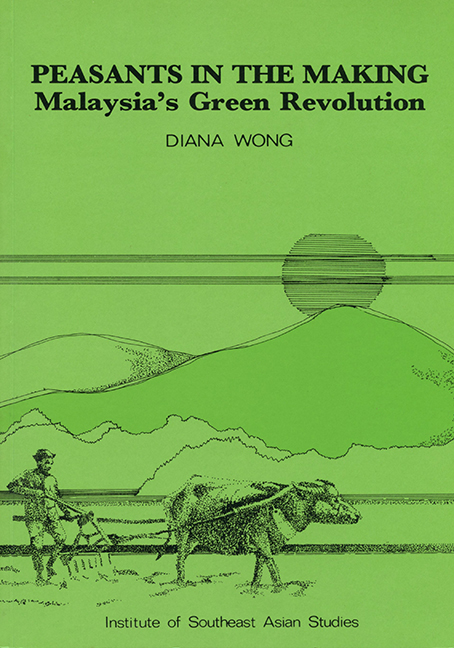Book contents
- Frontmatter
- Contents
- Acknowledgements
- Part I The Framing of the Study
- Part II The Anatomy of the Village
- Part III The Transformation of the Village Economy
- Part IV The Transformation of Village Society: The Unfolding of Social Differentiation
- Chapter 11 Kinship and the Family Development Cycle
- Chapter 12 The Village as a Community
- Chapter 13 The Pattern of Leadership: From Patron to Broker
- Part V Conclusion
- Appendix I Research Methodology
- Appendix II Questionnaire
- Bibliography
- THE AUTHOR
Chapter 12 - The Village as a Community
from Part IV - The Transformation of Village Society: The Unfolding of Social Differentiation
Published online by Cambridge University Press: 21 October 2015
- Frontmatter
- Contents
- Acknowledgements
- Part I The Framing of the Study
- Part II The Anatomy of the Village
- Part III The Transformation of the Village Economy
- Part IV The Transformation of Village Society: The Unfolding of Social Differentiation
- Chapter 11 Kinship and the Family Development Cycle
- Chapter 12 The Village as a Community
- Chapter 13 The Pattern of Leadership: From Patron to Broker
- Part V Conclusion
- Appendix I Research Methodology
- Appendix II Questionnaire
- Bibliography
- THE AUTHOR
Summary
INTRODUCTION
Common to all models of peasant society and economy or the “peasant mode of production” is the notion of the peasant household, as the basic unit of production and consumption embedded in a larger unit of distribution or better still, redistribution, be it the village or the kin group. The significance of the village (as opposed to kinship) as a unit of distribution where household production is governed according to the “safety-first principle” of subsistence assurance has been stressed for Southeast Asian societies in particular by Scott.
It is above all within the village — in the patterns of social control and reciprocity that structure daily conduct — where the subsistence ethic finds social expression. The principle which appears to unify a wide array of behaviour is this: ‘All village families will be guaranteed a minimal subsistence niche insofar as the resources controlled by villagers make this possible’.
Scotts warns against romanticizing this ‘subsistence insurance’ provided by the village since it was a product of the exigencies of peasant agricultural production with its shortage of labour rather than of altruism. Notwithstanding this, the paradigm of the moral economy with its unbreachable injunction to share has been widely invoked in studies of the Malaysian peasantry. Following the lead taken in Chapters 5 and 6, where the concept of the household and its value as a unit of analysis was subjected to a closer examination, this and the following chapter will be devoted to an analysis of the village and kinship as units of distribution. The argument will be the limited utility of this paradigm both for describing the empirical reality as well as explaining the specificities of the Malaysian peasantry.
INCOME-SHARING WITHIN THE VILLAGE?
Corner, for example, alludes to this in her study of villages in the Muda region:
A second, less obvious factor that also tends to disguise the higher preference for income in many households is to be found in the value system of village society [my emphasis].[…]
- Type
- Chapter
- Information
- Peasants in the MakingMalaysia's Green Revolution, pp. 184 - 196Publisher: ISEAS–Yusof Ishak InstitutePrint publication year: 1987



